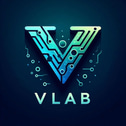Unraveling the Power of Keras
A Deep Dive into Seamless Neural Network Development


Introduction
The demand for a convenient and effective tool for use machine learning coupled with deep neural network could not be higher. So Keras, an open-source neural network library that has transformed how deep learning models are developed and tested by developers today has filled the void. This article will review Keras: unraveling its complexity, appreciating its beauty, and why it finds favor among novice and expert data scientists.
Understanding the simplicity in Keras
1. High-level Neural Networks API: Keras emerges as a high-level artificial neural networks API having the ability to offer simple and modular interfaces when coming up with deep learning models. As a result, it allows for easy development where developers focus on the concept behind model construction rather than implementation details
2. Backend agnosticism: Keras’ does not care about the underlying deep learning libraries such as TensorFlow and Theano. Consequently, this makes it possible for programmers to choose their backend that suits their preferences or project needs.
Setting up Keras
1. Installation and setup: Keras can be installed by using pip. This is the first step before anything else – installing the library. It does not matter if the backed is Theano or TensorFlow. From there you could delve into expansive documentation that has comprehensive tutorials as well as forums which offer help along your learning path.
2. Building a neural network: It’s remarkably easy with Keras. You only need to set up a sequential model, add layers with the desired number of neurons and then compile it using an optimization algorithm or loss functions available in the Keras library. Keras handles all the complex details so that you can focus on the architectural aspects of your neural network.
Advanced Features: Unleashing the power of Keras
1. Pre-trained models and transfer learning: You can use pre-trained models such as VGG16, ResNet or MobileNet (from Keras among others) for tasks like image classification Using Keras, one can perform transfer learning with minimal effort by changing any algorithm in these pre-trained models hence reusing them for your specific use case.
2. Callbacks and model visualization: For instance, Keras has many callbacks that can be employed to make the training process more efficient; they range from model checkpointing all the way early stopping amongst others. Besides with tools like TensorBoard you will also be able to visualize what your model’s architecture looks like and getting insights concerning its structure and performance.
The Future of Keras
As deep learning advances so too does Keras. Hence, keeping up is a must for those who want cutting-edge technology. Thanks to continuous updates, Keras remains ahead in matters of innovation, ensuring that programmers have access to the most recent neural network development technologies.
Keras – Where Simplicity Meets Power
All in all, Keras is a game-changer in deep learning. Keras offers simplicity and is user-friendly. It caters to beginners and advanced users with what they need - be it developing their initial network or fine-tuning an established one. For AI enthusiasts that are interested in Deep Learning, Keras has all the necessary tools. Get on board with it today!
